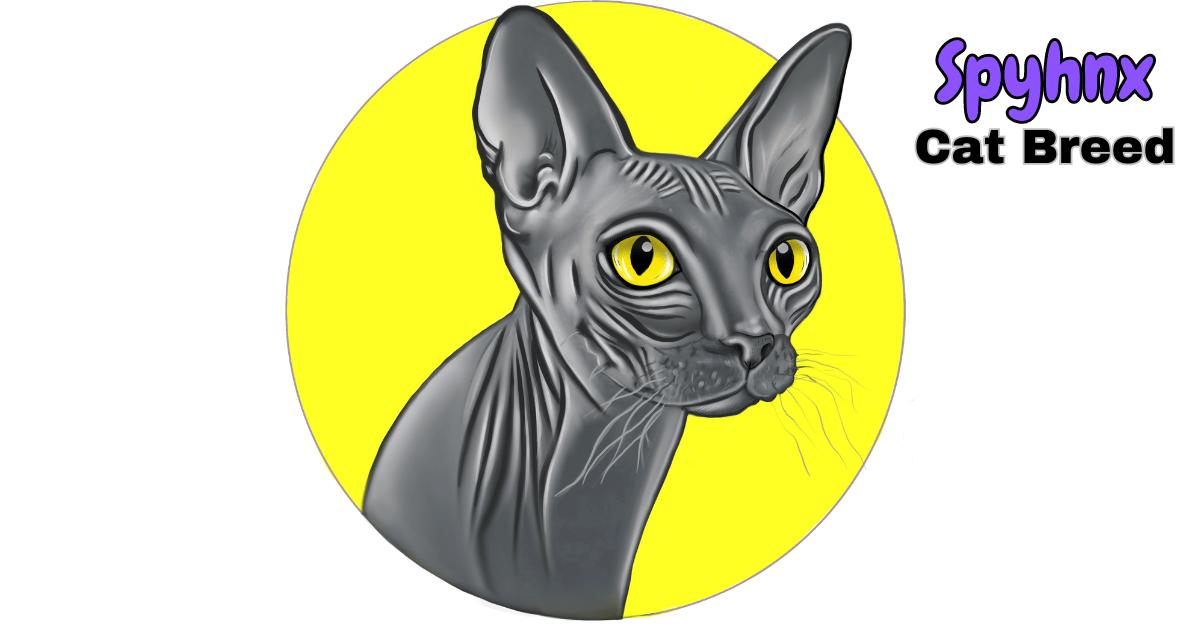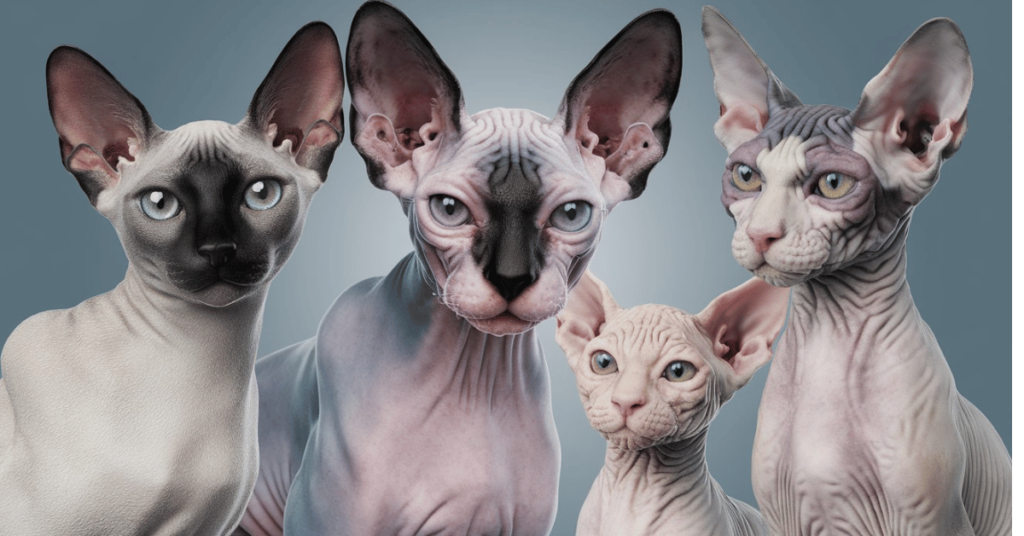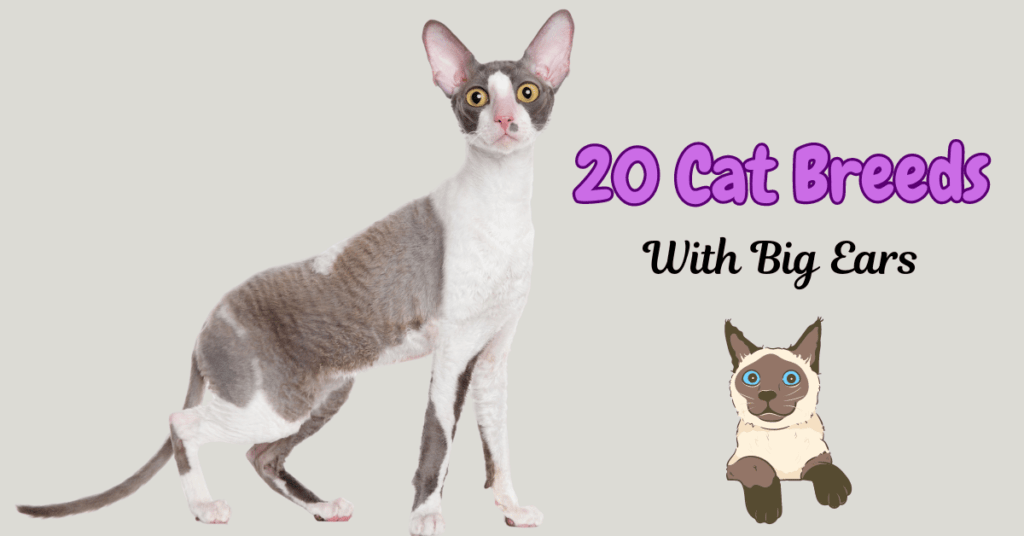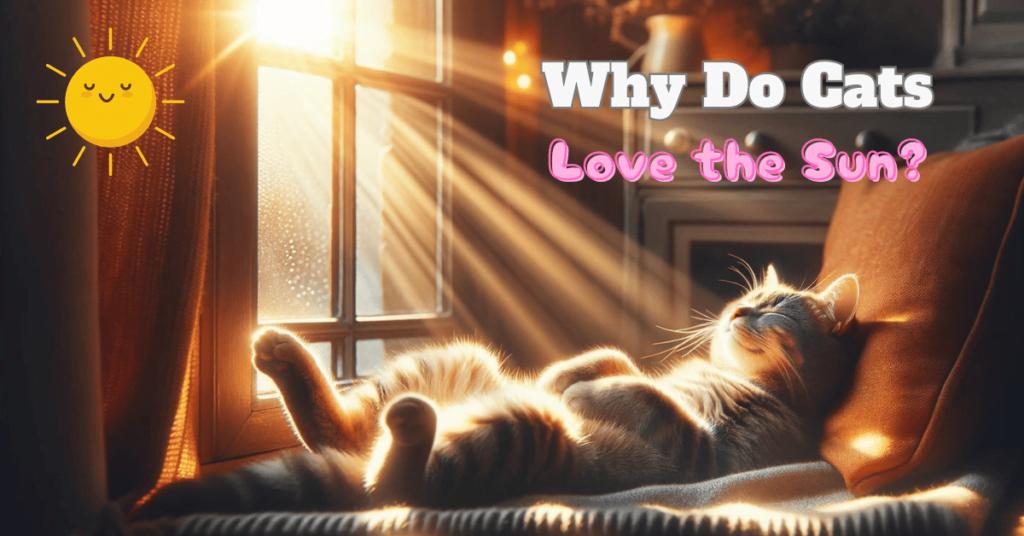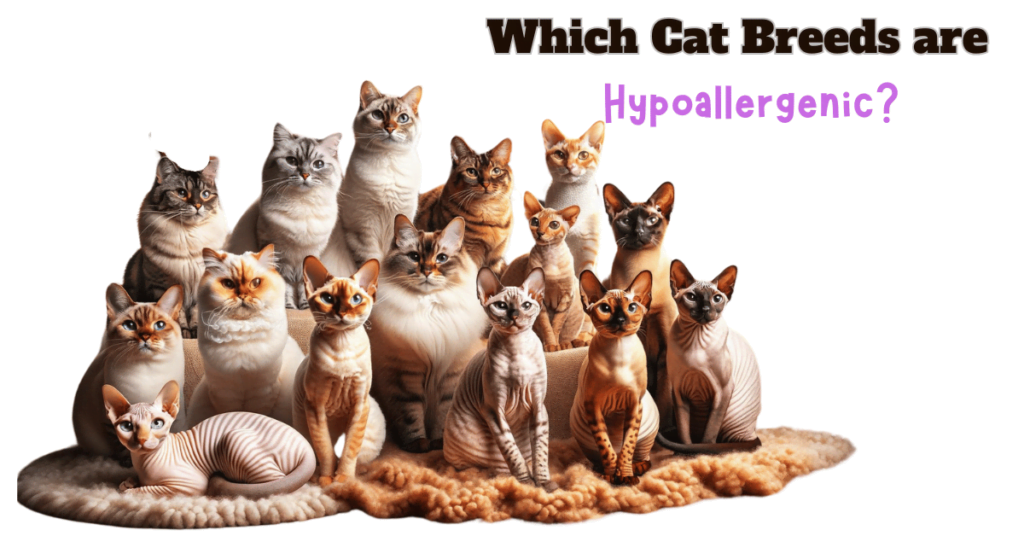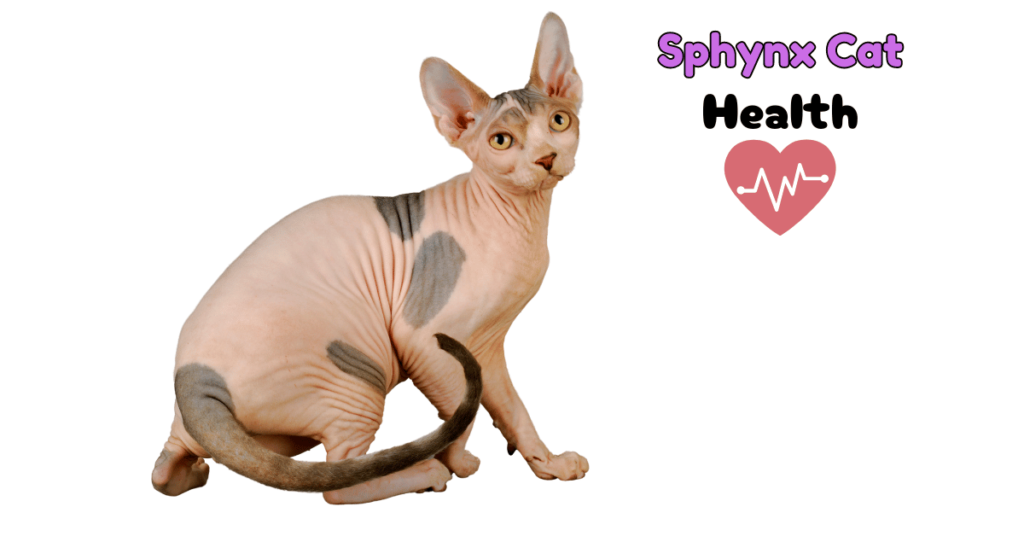This post contains affiliate links and I will be compensated if you make a purchase after clicking on my links.
The Sphynx Cat Breed: A Hairless Marvel
When you first lay eyes on a Sphynx cat, it’s hard not to be captivated by their unique, hairless appearance and the striking wrinkles that give them an otherworldly charm. These distinctive felines have earned a loyal following among cat enthusiasts, thanks to their intriguing looks and affectionate personalities.
In this post, we’ll explore their rich history, distinctive physical characteristics, and provide essential care tips. The Sphynx has also made notable appearances in popular culture, such as Mr. Bigglesworth, the cat belonging to Dr. Evil in the Austin Powers movies, played by a Sphynx named Ted NudeGent.
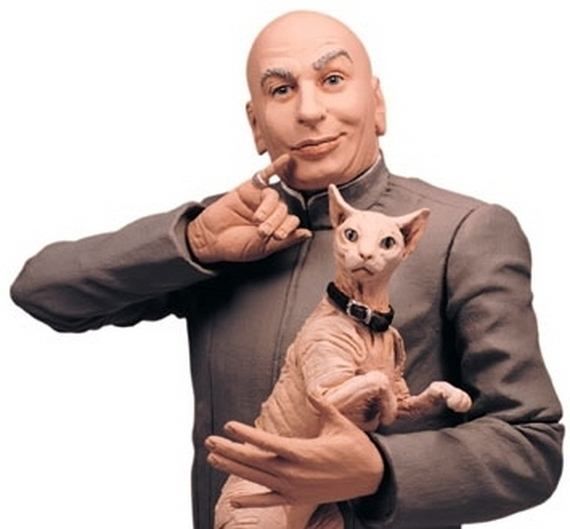
History and Origin of Sphynx Cat Breed
The Sphynx cat might look like it stepped straight out of ancient mythology, but their story is much more recent—and Canadian! While the ancient Aztecs were known for breeding hairless cats, the Sphynx cat we adore today originated in Toronto.
It all started in 1966 when a genetic quirk produced a hairless kitten in a litter of domestic shorthair cats. This little Canadian marvel, originally dubbed the Canadian Hairless, began its journey into the hearts of cat lovers everywhere.

Though hairless cats have popped up throughout history (yes, even the Aztecs had them), the Sphynx as we know it today is the result of some serious dedication by breeders. Most modern Sphynx cats can trace their lineage back to two kittens found in Minnesota in 1975 and three more discovered in Toronto in 1978.
These early hairless cats were bred with normal-coated cats, and their offspring were then bred back to other hairless cats to create the distinctive Sphynx look we recognize today. It wasn’t until 2002 that the Cat Fanciers’ Association recognized the Sphynx for competition in the championship class, and other cat associations quickly followed suit.
Fact: Despite their name and regal appearance, the Sphynx cat has no direct link to the ancient Egyptian Sphinx. Their exotic looks might remind us of grand statues from ancient Egypt, but their roots are firmly planted in 20th-century Canada.
Physical Characteristics of Sphynx Cat Breed
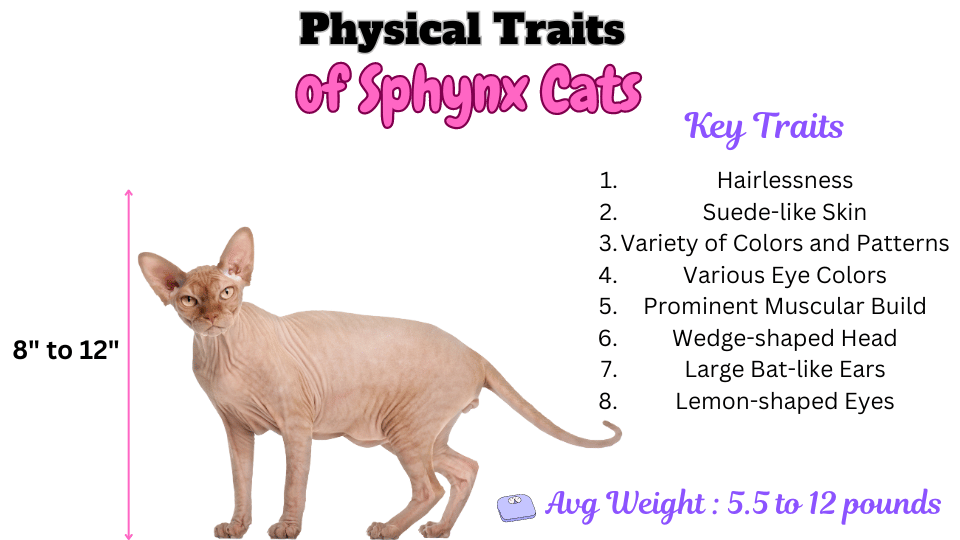
One of the most striking features of the Sphynx cat breed is, of course, their lack of fur, which highlights their elegant long lines and somewhat loose skin that forms charming wrinkles in some places.
However, Sphynx cats can vary in their degree of hairlessness. Some have a very fine ‘peach fuzz’ all over their bodies, while others might have a bit of fine fuzz only on their extremities. This peach fuzz can give their skin a soft, suede-like feel. Typically, they have a coating of hair no more than 1/8-inch in length, and many have a bit of short hair on the bridge of their nose and the backs of their ears.
Their nearly hairless bodies come in a variety of colors and patterns, including white, black, red, brown, and lilac. You can find Sphynx cats with any pattern, from solid colors to tabby patterns, spots, and even the rare and striking Calico pattern. Additionally, Sphynx cats can have any possible feline eye color, further enhancing their distinctive and varied appearance.
They have a wedge-shaped head with large, bat-like ears and lemon-shaped eyes, along with quite long legs and tail, and neat, rounded paws. The absence of whiskers is common, although they do have characteristic whisker pads above their mouth, giving them a unique “elf-like” expression.
Fact: Sphynx cats typically weigh between 5.5 to 12 pounds and stand about 8 to 10 inches tall at the shoulder.
Personality and Behavior of Sphynx Cats
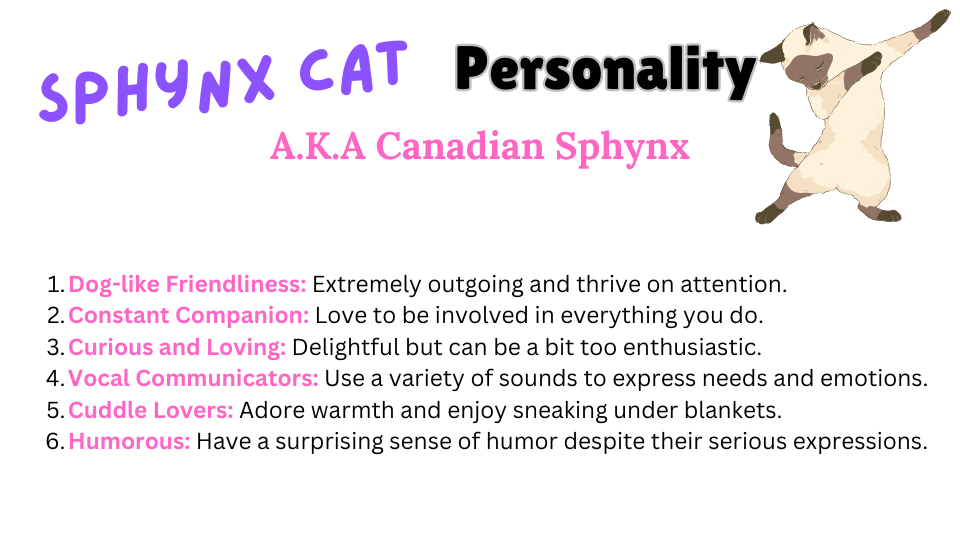
The Sphynx Cat Personality is renowned for its dog-like friendliness, thriving on attention and interaction. These affectionate felines love to be involved in everything you do—from paperwork to DIY projects, cooking, and even taking a bath. Expect them to be your constant companion, eager to “help” with whatever you’re doing. Their curious and loving nature makes them delightful, though sometimes a bit too enthusiastic.
Vocal and expressive, Sphynx cats use a range of sounds to communicate their needs, from soft purrs to loud meows. They aren’t shy about letting you know when they want attention, food, or playtime, which helps form strong bonds with their humans.
Not surprisingly for a hairless breed, Sphynx cats adore warmth and are extremely cuddly. They love to sneak under blankets or find sunny spots to lounge in. To keep their skin healthy and free from sunburn, make sure they don’t overdo their sunbathing. Pet-safe sunblock or limiting sun exposure works wonders.
Fun Fact: Sphynx cats are rarely shy and love meeting new people, kids, other cats, and even dogs. These chatty kitties have a surprising sense of humor that contrasts with their serious expressions.
Care and Health of the Sphynx Cat
Sphynx cats are heat-seekers due to their lack of fur insulation. When the temperature drops, your Sphynx will appreciate warm clothing or heating pads. There are even sweaters and coats made just for them, perfect for keeping them snug and stylish.
Despite being generally robust, Sphynx cats can have some health concerns and typically have a lifespan of 8-14 years. Regular vet check-ups are essential. Watch out for:
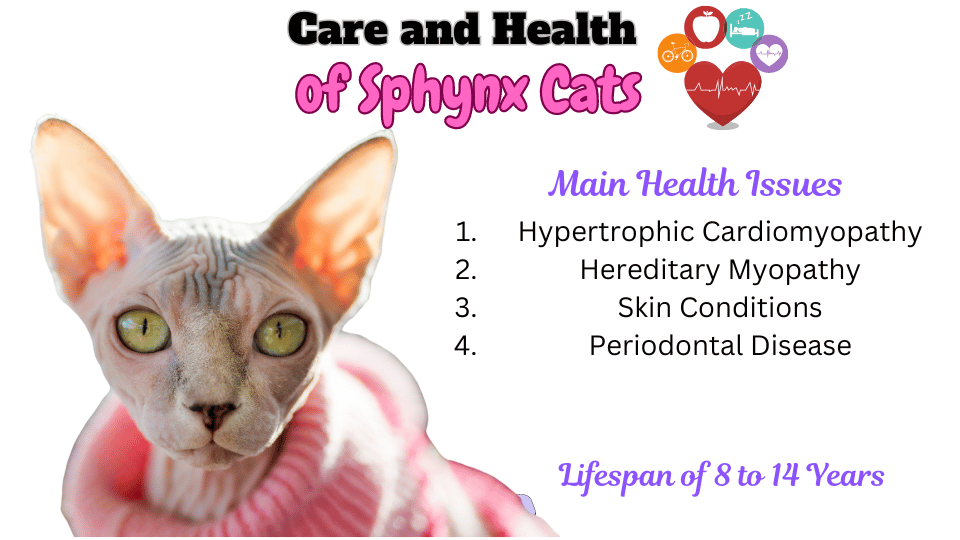
- Hypertrophic Cardiomyopathy (HCM): This heart disease causes thickening of the heart muscle and can be detected with an echocardiogram.
- Hereditary Myopathy: A condition affecting muscle function.
- Skin Conditions: Such as urticaria pigmentosa, which causes crusty sores to form on the body.
- Periodontal Disease: Regular teeth brushing and dental checkups are crucial to keep their teeth and gums healthy.
Pro Tip: To ensure you get a healthy kitten, avoid breeders who refuse to offer a health guarantee or who claim their line is guaranteed HCM-free.
Exercise and Playtime Needs
Sphynx cats are lively, curious, and always on the go! While they don’t demand a marathon, a good 20 to 30 minutes of playtime daily, broken into shorter sessions, keeps them engaged and content.
Despite their high energy, Sphynx cats aren’t built for the great outdoors due to their lack of a protective fur coat. Instead, transform your home into an indoor playground. Fill it with cat trees, food-dispensing puzzles, and jungle gyms.
Climbing and scratching are also high on their list of favorite activities. Provide plenty of vertical space with cat trees, shelves, and scratching posts. These help satisfy their natural instincts and keep their muscles toned.
Pro Tip: Training your Sphynx to perform tricks or navigate obstacle courses can be a great way to tap into their intelligence and curiosity.
Diet and Nutrition

Sphynx cats love their food, and their adorable potbellies prove it! With their high metabolism and sensitive digestive systems, it’s essential to pay close attention to their nutrition. These energetic felines often burn energy quickly, so they need a diet that keeps up with their lively lifestyle.
Because Sphynx cats have such high metabolisms, they often eat more than other breeds of the same size. Serving small meals at regular intervals throughout the day is ideal. For an adult Sphynx cat at a healthy weight, they should consume between 250-350 calories a day, depending on a number of factors. Our cat calorie calculator can help you determine the right amount for your pet.
This approach not only supports their rapid metabolism but also keeps them interested in their meals. Automated feeders can be a lifesaver here, dispensing food at set times to ensure your Sphynx stays well-fed even when you’re not home.
Sphynx cats require a balanced diet rich in protein, moderate in fats, and low in carbohydrates to maintain their health and energy levels. Some Sphynx owners swear by a raw food diet, claiming numerous health benefits, but whatever you choose, make sure it meets their nutritional needs.
Fact: Treats are also a fun way to bond with your cat and can provide added benefits like reducing hairballs, cleaning teeth, and keeping gums healthy.
Grooming Requirements of Sphynx Cats
Maintaining a Sphynx cat’s grooming routine is essential to keep them healthy and happy. While they may not have fur, these hairless wonders often need more grooming than their furry counterparts! Here’s how to keep your Sphynx looking fabulous and feeling great:
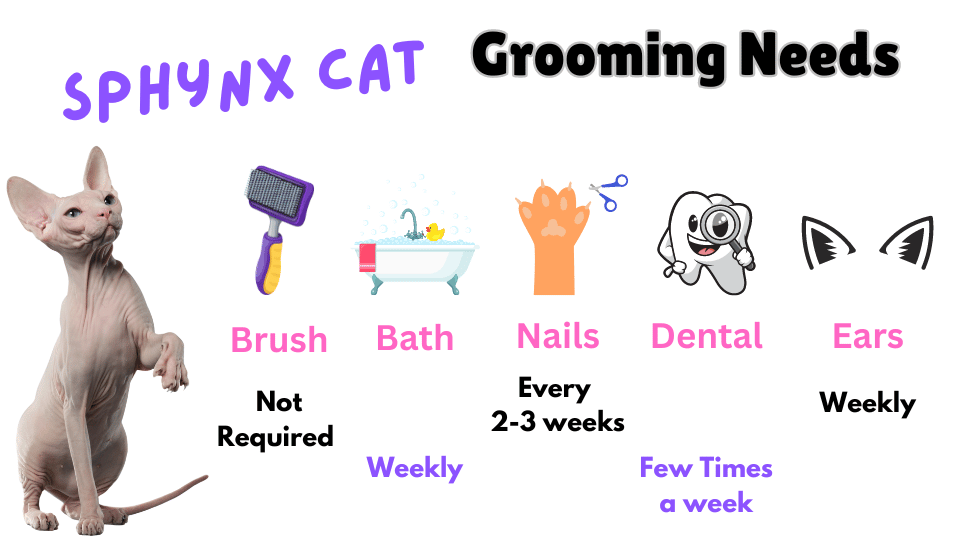
- Regular Baths: Without fur to absorb oils, Sphynx cats need weekly or biweekly baths to keep their skin healthy and prevent oil spots on furniture. Use a gentle, cat-specific shampoo. Start early to make bath time a fun bonding experience.
- Nail Trimming: Trim their nails every couple of weeks to prevent them from becoming too long and uncomfortable. If you’re new to nail trimming, go slow and use treats to make it a positive experience.
- Ear Cleaning: Clean their ears once a week to prevent wax buildup and potential infections. Use a cotton ball or soft cloth with a vet-recommended ear cleaner. Avoid cotton swabs, as they can push wax further into the ear canal.
- Eye Care: Wipe their eyes gently with a damp cloth or specially formulated eye wipes to remove dust and debris, preventing minor infections.
- Teeth Brushing: Brush their teeth regularly with cat-friendly toothpaste to prevent periodontal disease.
Fact: Without proper grooming and care, your Sphynx cat is at risk of developing skin conditions and other health concerns, which may also lead to unusual smells.
Are Sphynx Cats Hypoallergenic?
Sphynx cats are often thought of as hypoallergenic because they don’t have fur that sheds all over your home. In reality, they produce the same levels of the allergen Fel d 1, found in their saliva and dander, just like any other cat.
While their lack of hair means less shedding and may make them easier on your allergies, it’s important to note that they are not completely allergen-free.
If you’re allergic to cat hair, a Sphynx might reduce some symptoms, but they still carry allergens that can trigger reactions. So, while they may be a better option for some allergy sufferers, they aren’t a perfect solution for everyone.
Living with a Sphynx Cat
Sphynx cats hate being alone for long periods. If you’re away from home for most of the day, consider getting two Sphynx cats or ensuring they have another pet buddy to keep them company. Sphynxes get along well with other animals, including dogs, and will be happier with a friend to snuggle with.
Sphynx cats form strong bonds with their owners and love being part of the family’s daily activities. They thrive in loving, interactive households and need plenty of attention and social interaction to keep them emotionally healthy. If you can’t devote regular time and attention to your cat, the Sphynx might not be the right breed for you.
When it comes to traveling, Sphynx cats need a bit of extra care. Use a comfortable carrier equipped with a heating pad to keep them warm. Ensure the carrier is well-ventilated and secure, and pack familiar items like their favorite blanket or toy to reduce stress during the journey.
Ideal For: For those seeking an extreme cat that requires more attention than the average feline, the Sphynx may be ideal. However, they are not the best fit for households with very young children.
Embracing the Sphynx Cat Breed
The Sphynx cat’s unusual, hairless appearance might catch people off guard, but what they lack in fur, they more than make up for in personality. Owners are often initially drawn to the novelty and the lack of shedding, but they quickly fall in love with their Sphynx’s quirky and affectionate nature.
Bringing a Sphynx cat into your home means inviting a unique and loving companion into your life. Their distinct look and delightful personalities ensure they make a memorable and cherished addition to any household.
Ready to make your home a haven for your hairless companion? Visit our Hairless Cat Products Page to explore our specially curated selection of products that cater to the unique needs of the Sphynx. From skin care essentials to comfy apparel, find everything you need to pamper your Sphynx in style.
Meet Sean, a fintech whiz with a penchant for pet purrs and blockchain buzz. After a decade of fintech feats, Sean’s tech talents leaped from ledger lines to litter lines, driven by a passion for pets and a vision for a more connected pet care community. With three critter companions as co-pilots, Sean launched this blog to share a treasury of pet-friendly tech tips and tales.

